Increasingly, stationary brick barbecues or ovens with barbecues are being erected on sites. Portable metal structures from available tools are used only on the road. Stationary models are more convenient in many respects, but require a hood.
Why do you need a hood
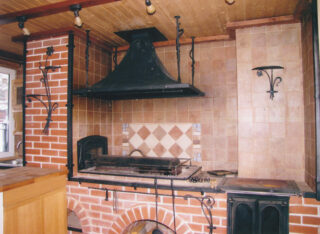
The smell of burning wood and roasting meat is considered by many to be pleasant, but not all and not always. If the grill is not equipped with an exhaust hood, smoke and smell spread throughout the yard.
The do-it-yourself barbecue hood performs 2 functions.
- It removes smoke from the structure - it does not enter the room and is discharged at a high enough height so as not to disturb anyone present.
- Improves traction as it creates additional pressure. Firewood burns faster and better, the flame temperature is higher, which means that food is cooked faster.
If the grill is outside, the hood protects the flame from rain.
Design options
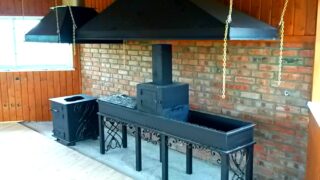
A chimney for a barbecue and a metal hood are not the same thing. The chimney removes waste gas. With good traction, this is usually enough. However, the chimney does not prevent the spread of odors, splashes of grease, and ash particles. The hood does this.
The structure is a dome in the form of a parallelepiped or a cut pyramid. Often he makes up a general design solution with a brazier or stove. There are 2 types of construction.
Metal hood
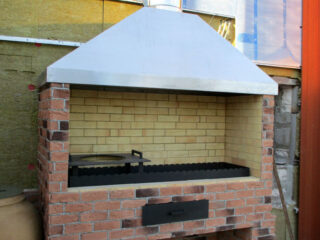
Made of heat-resistant steel or copper. These alloys are more durable and resistant to high temperatures. The dome is placed low enough above the hearth. It catches combustion products - solid, liquid, gaseous, and directs them into the chimney. The exhaust probe is not in contact with the communications.
A dome for a barbecue in a gazebo made of metal alloys has many advantages:
- versatile and can be combined with ovens and barbecues of any kind and type;
- easy to install;
- does not require complex maintenance;
- can be equipped with additional devices: fan, filters;
- attractive.
Disadvantage: the metal is very hot, so there is some danger of burns.
To remove soot, ash, spray effectively, the walls of the umbrella must be absolutely smooth. Their surface must be monitored and cleaned in a timely manner.
Brick construction
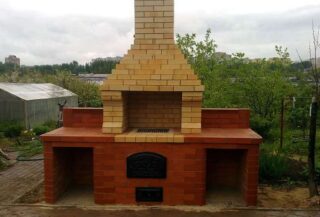
The dome is connected to the chimney in one piece. The actual cap is laid out with a stone, it looks like a pyramid. It covers most of the focal opening. Due to the draft, the combustion products are discharged into the flue duct.
The advantages are as follows:
- the brick dome combines the functions of a brazier and a hood;
- easily repaired;
- has a solid appearance;
- safe - the stone does not heat up as much as the metal.
Disadvantages:
- the ventilation structure is bulky;
- it takes experience to brick a dome;
- higher cost.
For a brick hood, you need refractory bricks and clay mortar.
Tools and materials
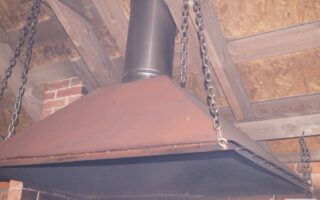
It is easier to make a metal hood for the barbecue with your own hands. This will require:
- steel sheet with a thickness of 1-3 mm;
- iron corners with a section of 30 * 30 * 30 mm;
- bolts for fasteners;
- a Bulgarian with a diamond suit;
- welding machine;
- hammer and riveting tools;
- plumb line and angle for checking verticality.
You will need a metal or brick stand to secure the dome. In the gazebo or on the veranda, the hood is suspended by chains from the ceiling. It looks impressive and interesting.
Components

The hood design is quite simple, but there are many requirements that must be followed exactly.
- An umbrella - or a dome. Its area should be 30% larger than the area of the lower part of the barbecue. In this case, the shape can be different: a higher dome has a smaller section, and a wider or flat one has a larger one.
- If an extractor hood is installed, the chimney must match the accessory. The chimney must be narrowed and bent, otherwise good draft cannot be achieved. The height is important: from the ground to the top of the chimney, there should be at least 2.8 m, and even more is better. The section of the chimney is determined by the area of the furnace.
- Since meat is most often cooked on the grill, it is necessary to install a grease trap. It looks like a frame with a removable container. The frame catches splashes and accumulates them, preventing fat from burning in the chimney or on the dome. The latter reduces the functionality of the devices.
- It is recommended to install a smoke extractor on high-power grills. It is a low-power fan that increases natural draft and removes odors better.
- A deflector is sometimes installed instead of a fan. It is a mechanical device that performs the same function due to its shape. However, compared to a fan, its efficiency depends on the weather conditions: the stronger the wind, the better it works.
- The chimney is equipped with a spark arrestor - this is a mandatory requirement for a stove located close to or inside the house. With a strong draft, burning particles rise up with air, if they are not stopped by the hood. Eggs can travel quite far and pose a fire hazard. The spark arrester is made in the form of a funnel made of heat-resistant steel.
All components of the hood can be easily combined. The grease trap or spark separator can be sized and attached to your own umbrella.
Construction requirements
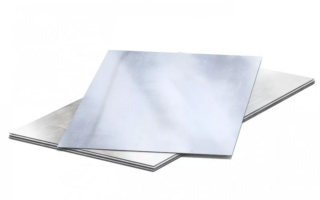
For example, you can imagine the standard requirements for the hood for a wood-fired barbecue:
- galvanized sheet with a thickness of at least 1-3 mm;
- smoke box length - 855-1550 mm;
- width - 660-950 mm;
- chimney section - 255 mm and more;
- chimney height at least 3 m.
When changing the barbecue area, it is important to maintain the indicated proportions.
Step by step manufacturing
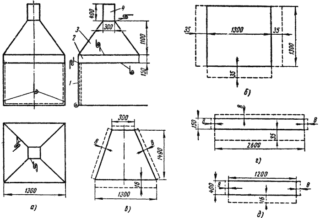
The hood for the barbecue in the gazebo can be made with your own hands. It requires the ability to work with a welding machine. The step-by-step instructions are pretty simple.
- Develop a drawing.
- Clean the corners from grease, cut to size.
- The lower base is welded from a metal profile and corners - a narrower opening of the dome.
- Collect the lower part, wider. In shape, it resembles a frame for a box with a low side.
- Side elements are welded to the corners on both frames. It turns out some semblance of a tetrahedral pyramid with a rectangular base.
- In the same way, a frame for a smoke collector is assembled - parts of a pipe of the required section.
- After the seams have cooled down after welding, they are processed with a grinding disc. It is recommended to paint the structure with heat-resistant paint.
- On a sheet of steel or a profiled sheet, the components of the umbrella and smoke collector are marked out and the metal is cut. Bend the edges. The smoke box is sheathed immediately. The sheets are fastened with rivets.
- A metal sheet is installed diagonally into the hood frame. This plate improves traction. It is fixed in the lower rectangular part of the umbrella.
- The cut fragments are sheathed on each side of the hood and fixed with rivets.
- The finished product is painted with heat-resistant paint.
When installing, they first put the dome - on the walls of the barbecue, on a rack, suspended on suspensions from the ceiling. Then they put the pipe on the hood and fix it with rivets.
Newbie mistakes
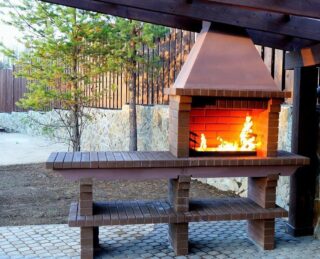
Deficiencies in the development and installation of the hood become noticeable immediately after the start of operation. Most of them are easy enough to fix.
- To reliably remove smoke, the height of the outlet end of the pipe from the ground should be at least 3 m. If the height is not enough, the chimney is built up.
- Often, when firing up, the smoke does not go into the hood at all. This is not a mounting error. Until the flame is strong enough, the density of the smoke does not differ from that of the air and therefore no pressure difference is created.
- If the smoke is not drawn out and with a good flame, it is most likely that the pipe section is insufficient. In this case, the chimney is changed. If only some of the smoke is lost, installing a fan will help.
The hood over the barbecue is an indispensable element of a stationary structure. Otherwise, the pleasure of the party can be severely spoiled by unpleasant smells and smoke.








